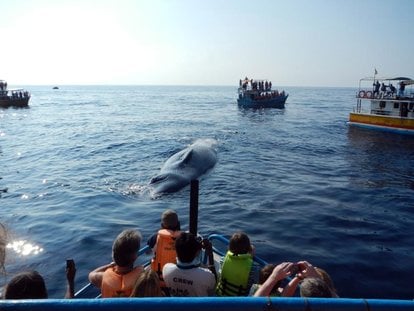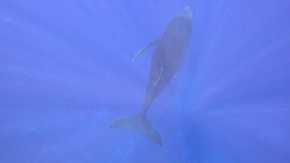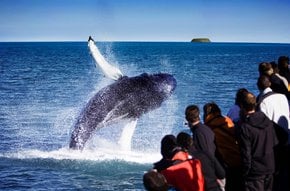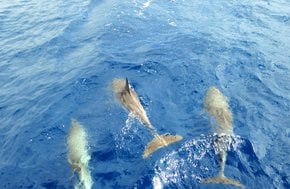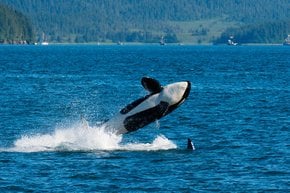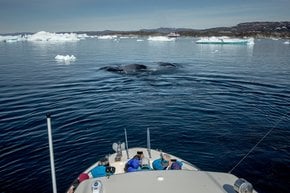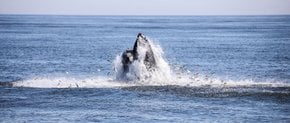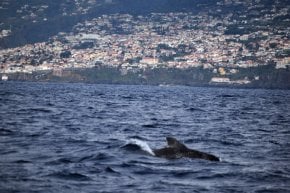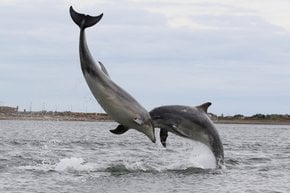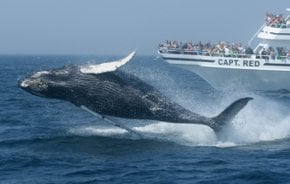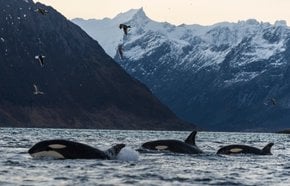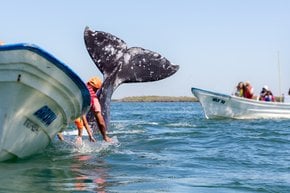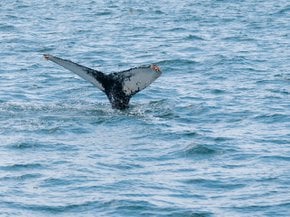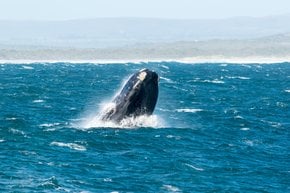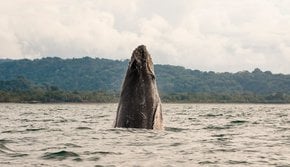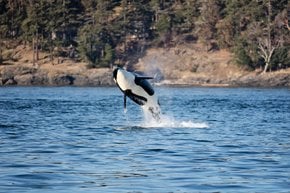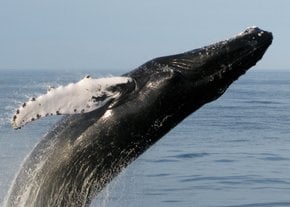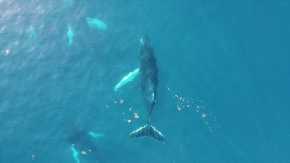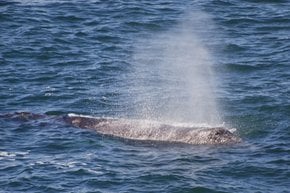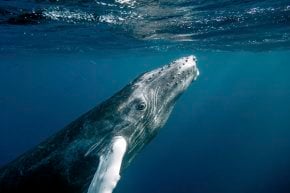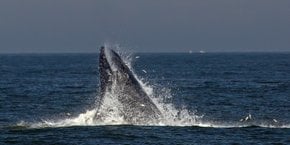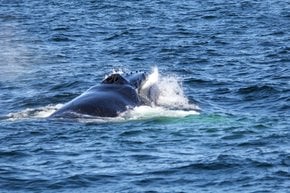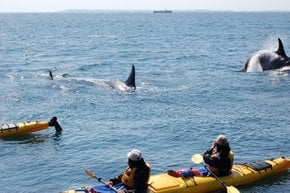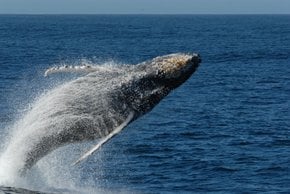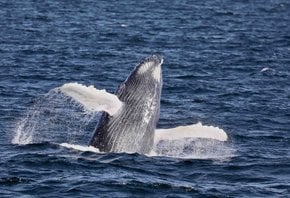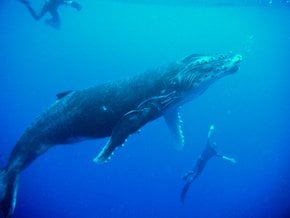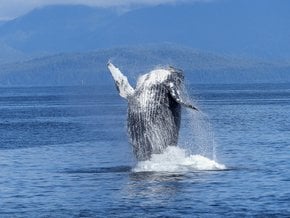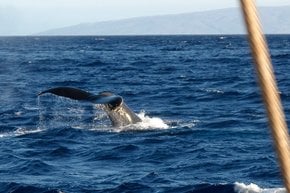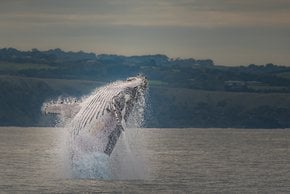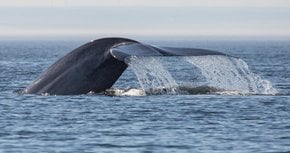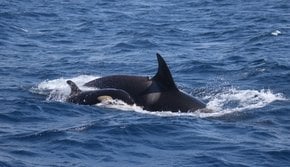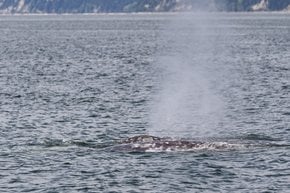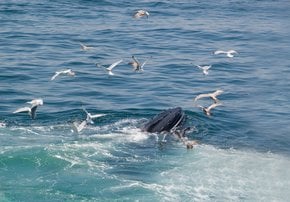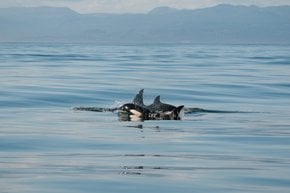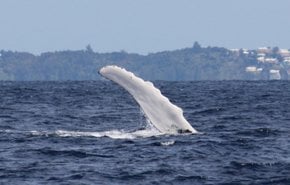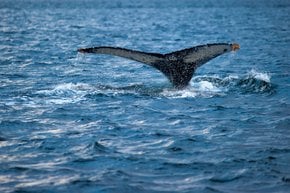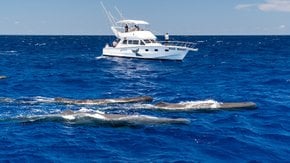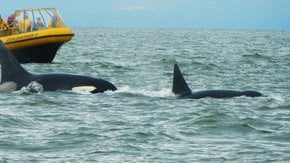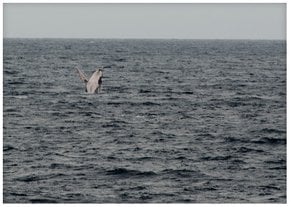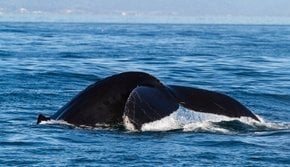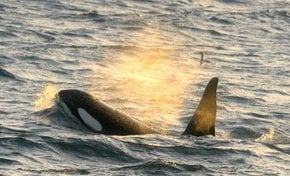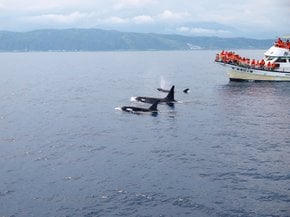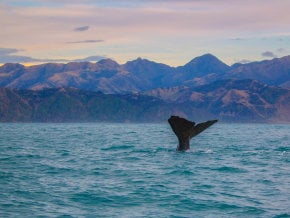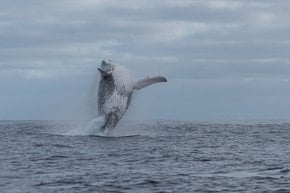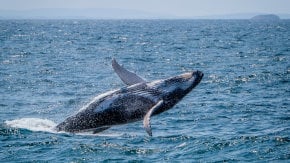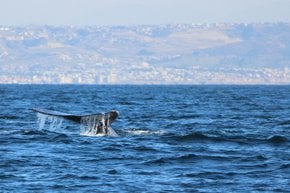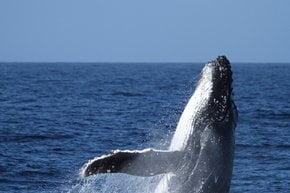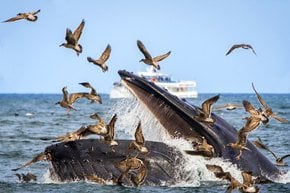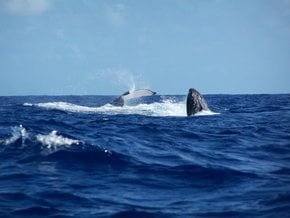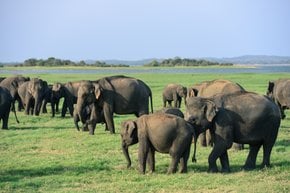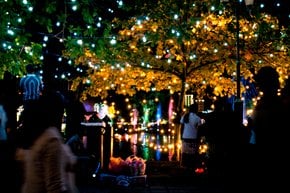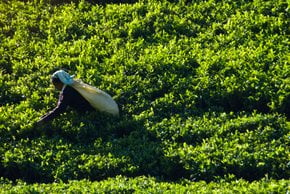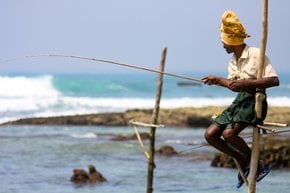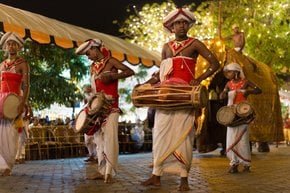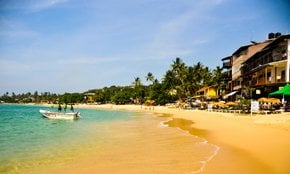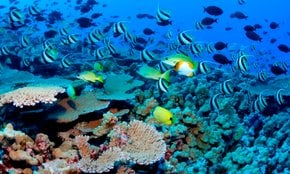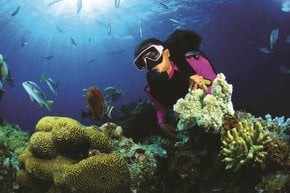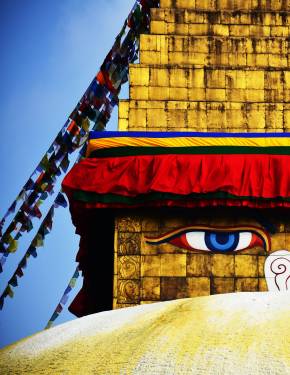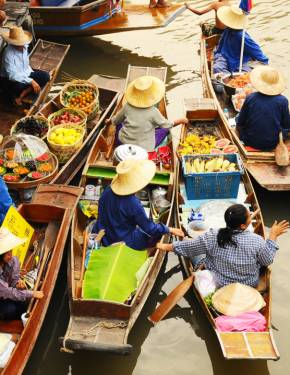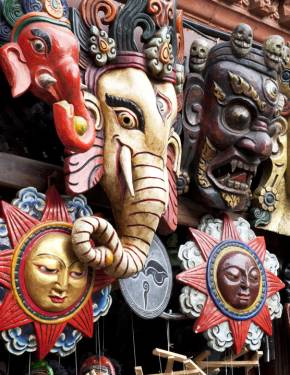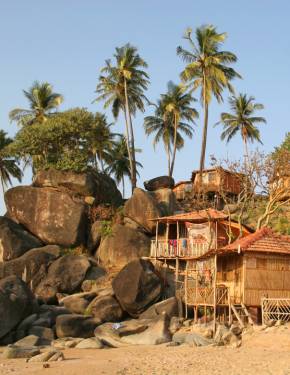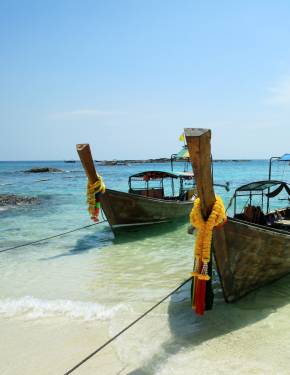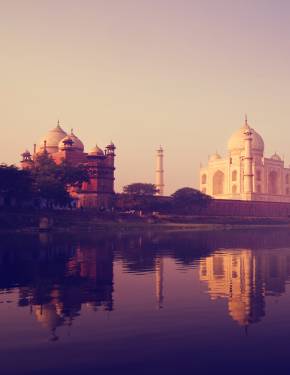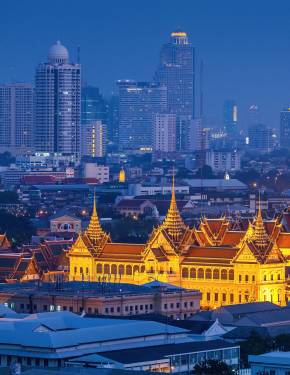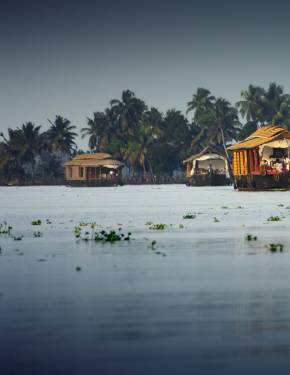Observação de baleias em Sri Lanka 2025-2026
Sri Lanka está felizmente situado em um ponto de vista para observar baleias
Melhor altura: Novembro-Abril | Julho-Setembro
Mais de 26 espécies de cetáceos, como baleias azuis, espermatozoides e baleias finas, podem ser observadas da costa do Sri Lanka. Baleias azuis são os hóspedes mais frequentes nas águas do Sri Lanka. locais populares de observação de baleias incluem Dendra Point, Mirissa e Trincomalee
Dendra Point é a ponta mais meridional do Sri Lanka. Devido à estreita plataforma continental, as baleias podem ser vistas tão perto como a poucos quilômetros da costa. Às vezes eles podem ser vistos 54-m (176-ft) do farol de Dendra. Dendra Point é o local mais confiável para a observação de baleias devido a 90% de chances de ver baleias azuis e uma infra-estrutura bem desenvolvida. Tours para Dendra Point partem de Galle e Hikkaduwa.
Blue whales are the largest creatures to have ever lived on Earth. They primarily feed on krill, filtering massive amounts of ocean water through their baleen plates, which act like a sieve. Some of the largest blue whales can consume up to 6 tons of krill daily. Their blue-gray, mottled skin takes on a light blue hue underwater, giving them their name. While blue whales are sometimes seen in small groups, they are typically solitary or found in pairs.
Mirissa oferece excursões regulares de observação de baleias e golfinhos. Barcos partem às 7 da manhã do porto de Mirissa e passam três ou quatro horas no mar. As chances de ver baleias e golfinhos durante a alta temporada são mais de 90%. O melhor momento para observar baleias na costa sul é de novembro a abril.
Uma opção alternativa é observar baleias em Trincomalee, localizado na costa nordeste. A maioria dos passeios de observação de baleias lá começam às 6:30 da manhã. Dependendo das condições do mar, pode levar até 3 horas. No norte, o melhor momento para observar baleias é geralmente de julho a setembro
Due to the narrow continental shelf, whales can be seen as close as a few miles from the shore here. Sometimes, they can be seen 54-m (176 ft) from the Dondra Lighthouse. Dondra Point is the most reliable place for whale watching due to a ninety percent chance of seeing blue whales and a well-developed infrastructure. Tours to Dondra Point leave from Galle and Hikkaduwa.
Mirissa is another great place for whale and dolphin-watching tours in Sri Lanka. It is a fishing village located on the southern coast between Matara and Galle. Known for its stunning scenery, unspoiled beaches, and delicious cuisine, it’s one of the most accessible spots for viewing majestic whales and pods of dolphins. The town is easily reachable from Colombo and other major cities, making it a popular destination for wildlife enthusiasts.
Mirissa offers regular whale-watching excursions. Boats leave at 7 am from Mirissa Harbor and spend three or four hours at sea. The chances of seeing whales and dolphins during high season are over 90%. The best time for whale watching on the southern coast is from November to April.
An alternative option is to watch whales in Trincomalee, located on the northeast coast. Home to one of the world’s finest natural harbors, the town is celebrated as the most picturesque coastal areas on the island. Most of the whale-watching tours there start at 6:30 am. Depending on the sea conditions, it can take up to 3 hours. From May to August, blue whales remain as close as 6-8 nautical miles (about 30 min by boat) east of Trincomalee.
Trincomalee, situated approximately 2 hours from Pasikudah, is renowned for its whale-watching opportunities, with Nilaveli and Uppuveli beaches being the most frequented spots.
This pristine, untouched beach on Sri Lanka’s west coast, just north of Colombo, is ideal for spotting both whales and dolphins. Kalpitiya is renowned for its impressive pods of dolphins and sightings of sperm whales. Watching hundreds of dolphins swim alongside your boat, diving under the waves, jumping, spinning, and leaping out of the water, creates a breathtaking experience you won’t soon forget. The prime season for dolphin and whale watching in Kalpitiya runs from November to March, offering unforgettable marine wildlife encounters.

